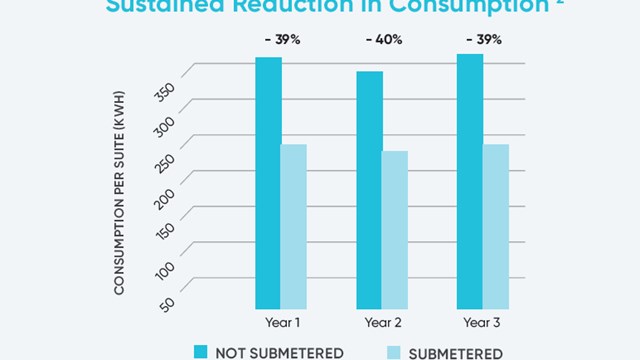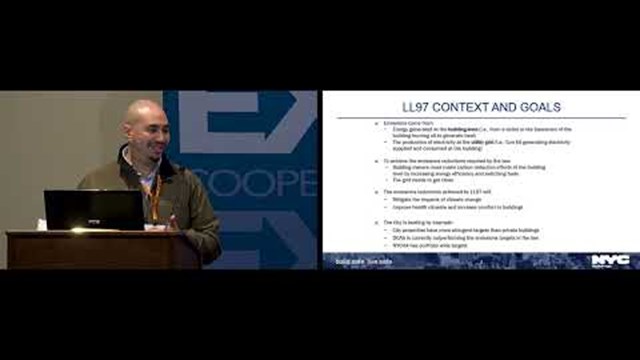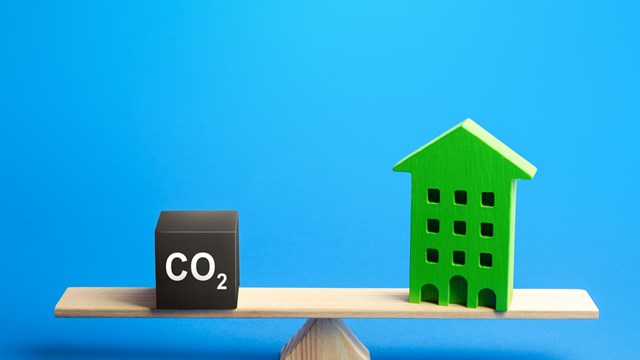
The Big Apple is looking awfully green these days. After all, there’s so much going on in the city to make it greener, more environmentally conscious and more energy efficient than ever before. A few years ago, New York City was named one of the top 10 green cities in America thanks to the use of public transportation, energy-efficient housing and low use of fossil fuels and pesticides.
Last year, in David Owen’s book Green Metropolis: What the City Can Teach the Country About True Sustainability, he named New York City ‘the’ greenest city in America. Although New York City still has a long way to go, over the last decade it has become something of an international model among large city for green practices and innovations.
A Little Green History
But this idea of a green city isn’t new. According to the Urban Green Council, New York's first comprehensive green building project was a series of renovations to the historic Schermerhorn Building in 1992, which now serves as the National Audubon Society headquarters. In 1998, several floors of the Natural Resources Defense Council building in Manhattan was renovated to address energy efficiency, light, air quality and the health and well-being of the buildings occupants. Four Times Square became the first green skyscraper in North America in 1999. From there, the Office of Sustainable Design was created in 1997 and published the High Performance Building Guidelines in 1999.
In January 2000, the Battery Park City Authority published the Residential Environmental Guidelines, to establish a process for the creation of environmentally responsible residential buildings, appreciably ahead of current standards and practices for development. These guidelines were responsible for the construction of the first "green" residential tower in the United States. This innovative building, The Solaire, was the first in a succession of residential buildings that will become the model for healthier, ecologically responsible environments where occupants collectively enjoy the benefits of living in a "green" community.
When Battery Park City is complete, it will be home to eight green residential high-rise buildings, including the Solaire and The Visionaire. The Goldman Sachs world headquarters, which is scheduled for completion this year, will be the largest LEED-certified building in the country and the New York Mercantile Exchange, is the first commercial building in New York State to receive a LEED for Existing Buildings rating.
In 2002, the Urban Green Council, the U.S. Green Building Council of New York, was established and is now the second-largest USGBC chapter in the nation. The Urban Green Council has since helped to pass Local Law 86 in 2005, requiring most city-owned and city-funded buildings to achieve LEED Silver certification. It’s expected to green more than $12 billion worth of city construction by 2017.
Preparing a Green Future
In 2006, Mayor Michael R. Bloomberg implemented one of the most comprehensive urban planning directives in the nation: PlaNYC 2030, which includes ten goals over the next 25 years, including making homes more sustainable, reducing global warming emissions by more than 30 percent, achieving the cleanest air of any big city in America, cleaning up all contaminated land in the city, improving the energy infrastructure, opening 90 percent of the waterways for recreation by reducing water pollution and preserving the natural areas. The plan is being hailed as a positive step forward. Each part of the plan will be phased in with the first part, the New York City Energy Conservation Code (NYCECC) becoming effective July 1, 2010.
Part of the mayor’s initiative is the Greener, Greater Buildings Plan, which contains a number of legislative components focusing on the city’s private buildings of over 50,000 square feet. Some of the requirements besides the revamping of the New York City energy code to mandate the use of newer, more efficient code-compliant equipment when buildings are undergoing renovations, include mandatory lighting upgrades for large commercial buildings over the next 15 years, a benchmarking system so that buildings’ energy usages may be analyzed and compared, mandatory energy audits and retro-commissioning, green workforce development training to create thousands of jobs, and finally, assistance for financing green upgrades. The plan aims to achieve a 30 percent reduction in New York City's annual greenhouse gas emissions below 2005 levels by 2030. The legislation, consisting of Local Laws 84, 85, 87 and 88, was passed in December 2009, with various implementation dates [see sidebar].
According to Frank Lauricella, director of business development for The Daylight Savings Company, a Goshen-based firm that provides energy consulting services to commercial and residential clients, the new legislation requires residential buildings over 50,000 square feet to perform “benchmarking” assessments of their energy usage.
While some building administrators initially balked, contending that mandatory energy audits and benchmarking would impose undue financial hardship on already-strapped reserves, Lauricella says, “The benchmarking is not that really expensive to do. It’s a little bit tedious because you have to gather enough tenant data in order to do an effective benchmark. It’s not just the common areas—you have to benchmark the entire building, which requires getting utility data. The biggest hurdle is getting all the documentation put together. Once you have that, the benchmarking itself is not terribly difficult. But if you’re not used to doing it generally people can ask for help.”
According to Adam Freed, AICP, acting director, Mayor's Office of Long-Term Planning and Sustainability, the main idea behind adopting this part of the legislation is that it closes a loophole previously found in the old energy code. "In the old energy code, if a building replaced less than half of something, say 8 of 20 windows, it wasn't required to upgrade them, but with the new energy code when a super or resident manager replaces anything in the building, it now must be upgraded to a more energy efficient product.”
It’s a plan that’s meeting with positive responses. “I like the emphasis on energy efficiency and how the legislation is being phased in,” says Stephen T. DelPercio, an associate at Arent Fox LLP, where he works in the construction and real estate groups and provides advice with respect to the emerging legal and regulatory issues associated with green building. “It’s a positive first step in increasing the energy efficiency of buildings.”
Buildings looking to comply—or just get a clearer picture of their own energy usage patterns— don’t have to go it alone, says Lauricella. “The first step is to contact a reputable engineering firm, someone who’s experienced. You need to start doing this, because while there is a compliance issue here, there is the additional benefit that can save your utility costs: benchmarking or retro-commissioning or making replacements, whatever it may be, will save costs. A good starting point is always an audit. Benchmarking is not an end-all, it’s rather a simple tool that basically compares your building to the next, and is what they’ve been mandating. What we’ve been telling people is to get an unbiased energy audit so you’ve got a baseline, you understand how your building is performing, you know how and where your utility costs are going, and now you have a plan with data which you can now address in the short-term or have a long-term plan.”
NYSERDA
Up in Albany, the New York State Energy Research and Development Authority (NYSERDA) is known for its wide range of energy incentives, covering everything from Energy Star-rated lighting and heating/cooling equipment to geothermal and solar systems. NYSERDA has both a “Multifamily Performance Program” and a Multifamily New Construction Program, both of which can give tips to make a building more energy-efficient and more comfortable.
NYSERDA spokesperson Jeffrey Gordon says that while these programs are available statewide, most of the interest has been in the New York City area. He adds that 23 percent of the buildings that have taken advantage of the programs have been condo and co-op buildings.
In the past, these programs included incentives for energy-efficient insulation, heating, lighting and more. The programs were being redesigned at the time this article was being written, but the agency will begin rolling out the new initiatives in September—and a total of $23 million in funds will be available for the coming year.
Green at Home
There’s also a lot of work going on in behind the front doors of many New York City’s residential buildings as resident managers and supers make significant changes to retrofit their buildings and make them more energy efficient to meet these green standards.
To train many supers and management companies on what they need to know about making their building green is The 32BJ Thomas Shortman Training Fund (TSTF), which has been providing green building training to building and maintenance members in New York City for more than five years.
“It originally began as a way to prepare workers to work in newly-constructed green buildings and quickly evolved to training workers as existing building how to make their building more efficient, since most of the buildings that will be here 30 years from now are already built,” says Linda Nelson, director of the service worker union’s training center.
Their newest program, 1,000 Green Supers, originated at the TSTF in early 2009. “Having seen successful examples of operators and superintendents who reaped energy savings in the buildings and sensing the growing trend towards green building practices, TSTF convened employer and labor/worker committees to define the role of a green superintendent and explore the impact that operations and maintenance staff could have on New York City residential buildings,” says Nelson. “Employers wanted superintendents with energy-efficiency and green knowledge, and the union (with an 80% density in residential building in Manhattan) saw a large-scale training program as an opportunity to set a new standard in building operations and maintenance.
The U.S. Department of Labor awarded a federal grant to TSTF to upgrade the energy efficiency skills of operations and maintenance staff and the response to the program has been positive. “Owners, management companies and employees see Green Supers as a program that adds value, skills and opportunities to make our buildings greener and more energy efficient,” says Nelson.
This year, The Urban Green Council’s Green Codes Task Force released 111 recommendations to green the laws and regulations governing construction. “They are proposing amendments into the building code,” explains DelPercio. “Lot of what they’re proposing is based on LEED with the principles behind it.”
There is so much more going on in the city—commercially, residentially, and just plain green living—that it’s impossible to discuss it all in one article. For example, the Empire State Building is being retrofitted to reduce the energy use by nearly 40 percent, saving $4.4 million every year. To increase energy efficiency, all 6,514 windows will be refurbished on site), the heating, cooling and ventilation systems will be wirelessly monitored and controlled, offices will be organized to maximize use of natural lighting and tenants will be able to monitor their individual energy consumption.
And on the transportation front, New York City just got its first electric vehicle charging station, in a parking lot close to the Jacob K. Javits Convention Center and the Hudson River. It’s the first of a planned 100 EV charging stations to open within the next year.
To learn more about eco-friendly living, The Big Green Apple: Your Guide to Eco-Friendly Living in New York City, provides simple ways you can make a difference. With it, you'll discover a comprehensive set of tips and strategies of how to adopt a lower-impact life without compromising your comfortable and cool urban lifestyle. You can also check out this database for a list of incentives. Go to www.dsireusa.org and click on NY state.
Lisa Iannucci is an author, a freelance writer and a frequent contributor to The Cooperator.









Leave a Comment